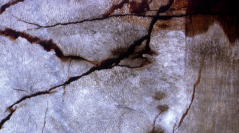

 Comptes Rendus Palevol
21 (42) - Pages 927-938
Comptes Rendus Palevol
21 (42) - Pages 927-938The fossil record of arborescent lignophytes shows an increasing anatomical diversity during the Tournaisian (360-347 Mya), suggesting a morpho-anatomical diversification following the extinction of the progymnosperm Archaeopteris Dawson, 1871 at the Devonian-Carboniferous boundary. This view has been partly constructed on recent investigations of Early Carboniferous deposits in eastern Australia. In this paper, we describe new silicified wood remains from the Tournaisian of the Burdekin Basin, northeastern Queensland, Australia, that are anatomically close to the genera Pitus Zalessky, 1911 and Eristophyton Gordon, 1935. While uncertain, the taxonomic affinities of these wood remains have several implications for future studies of Early Carboniferous arborescent lignophytes. First, the taxonomy of Eristophyton and Pitus has become increasingly problematic as reports of fossil wood assigned to these genera have extended beyond Laurussia. Second, Eastern Gondwanan and Laurussian floras display a convergent pattern of diversification from the Devonian, with the probable presence of a diversity of lignophyte trees in the Early Carboniferous. Third, convergence between Laurussia and Australia with respect to wood anatomy and discrete growth rings may be consistent with past suggestions of a monsoonal circulation during the Early Carboniferous.
Early Carboniferous, Gondwana, trees, lignophytes, palaeoecology, palaeogeography.